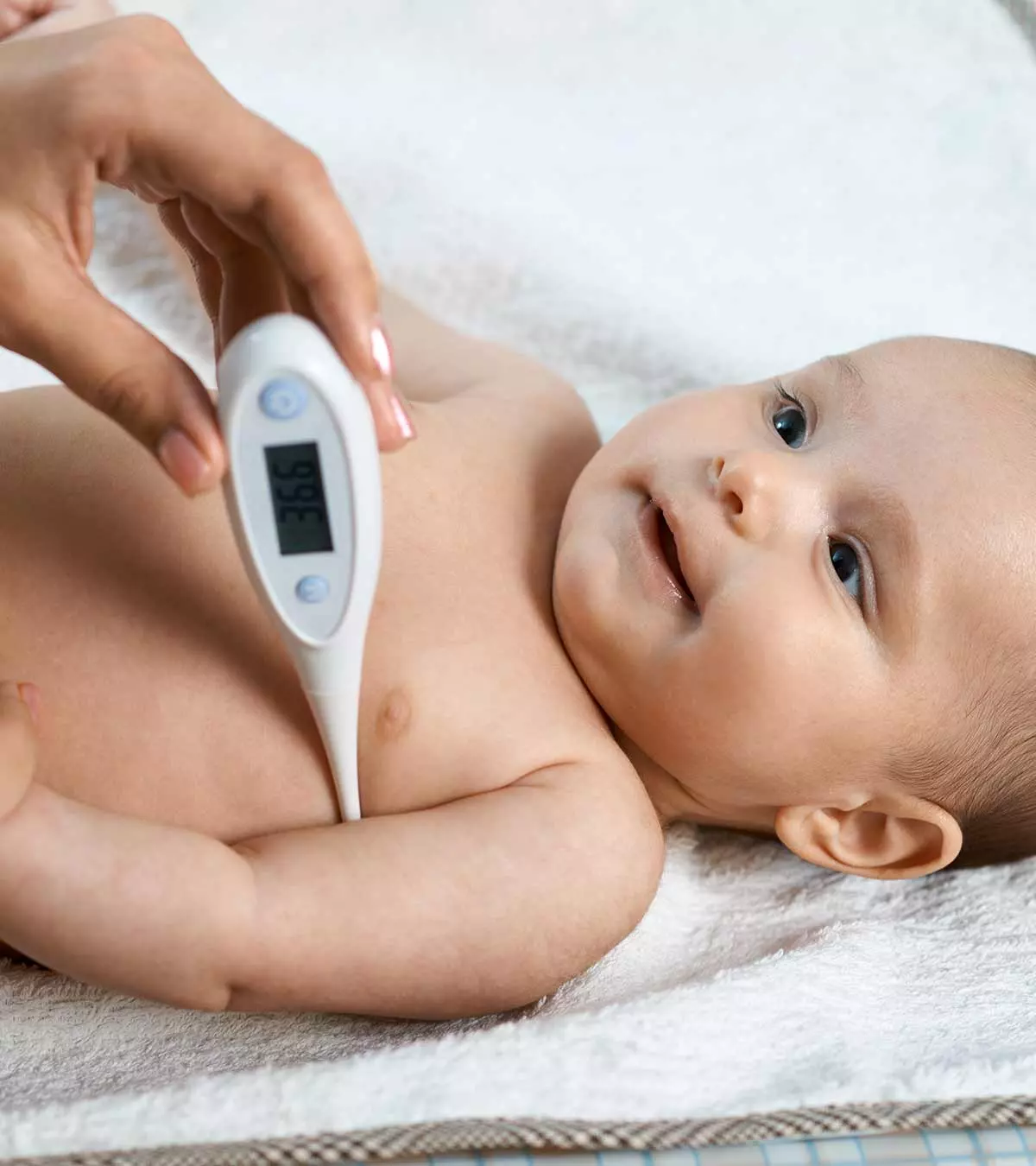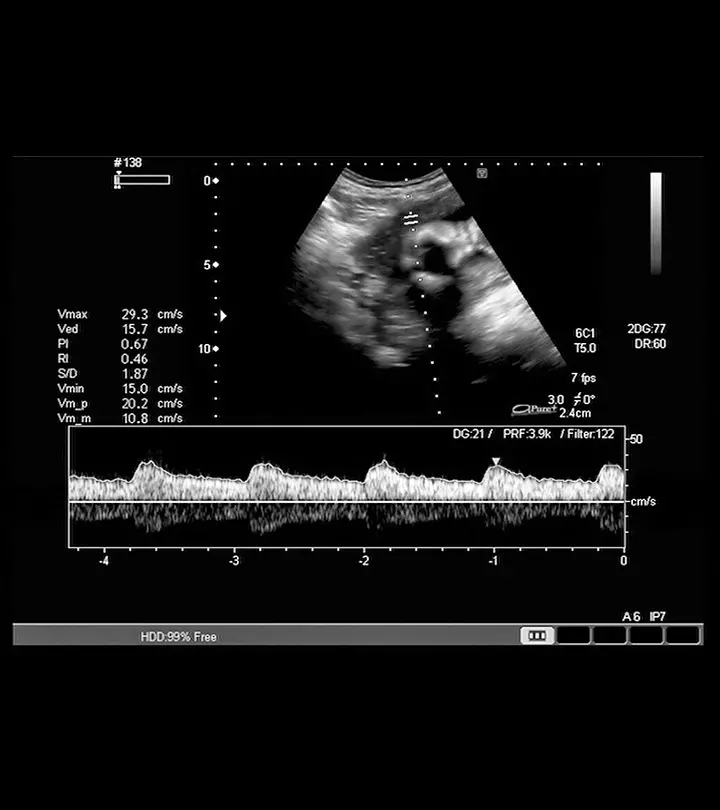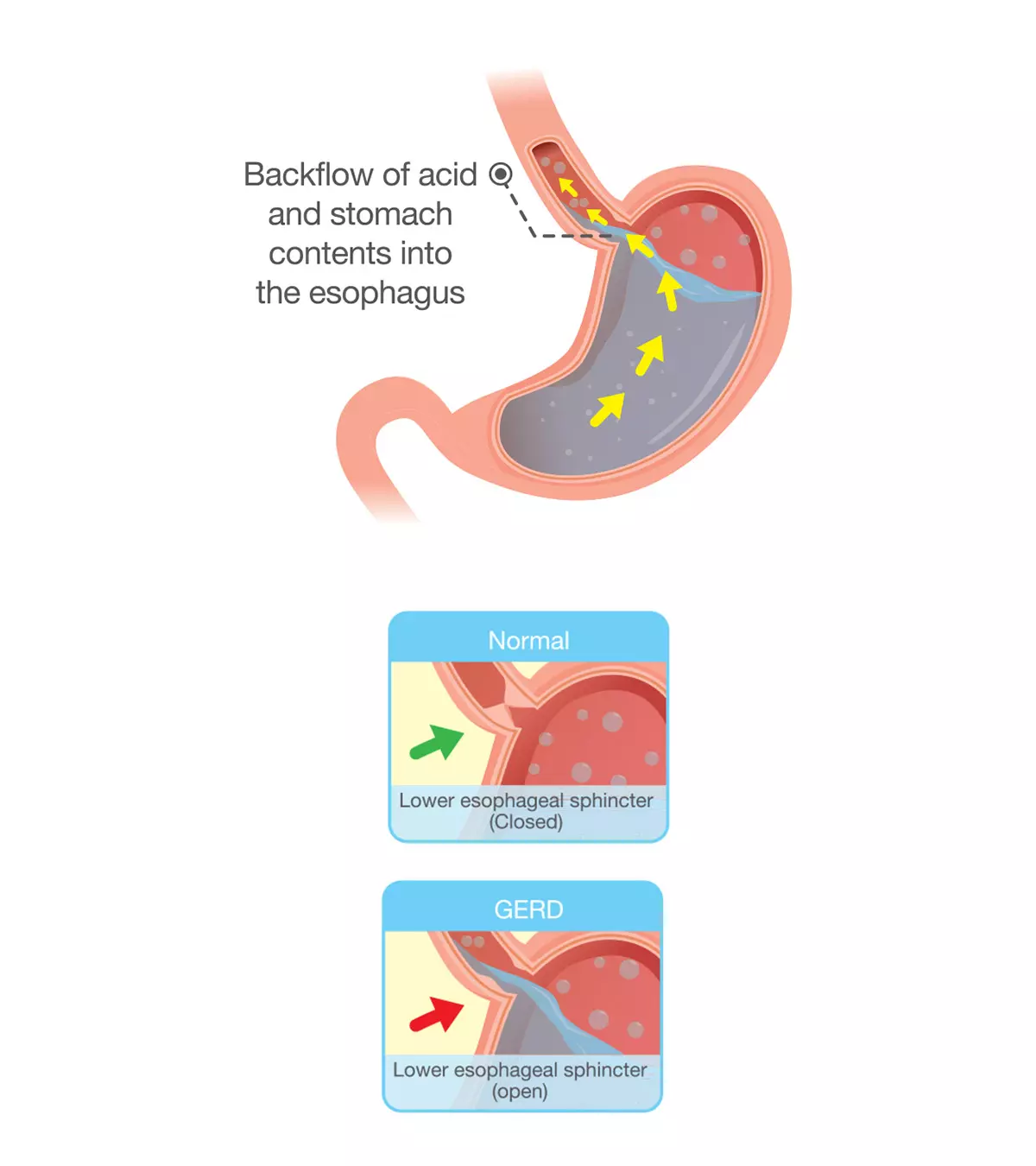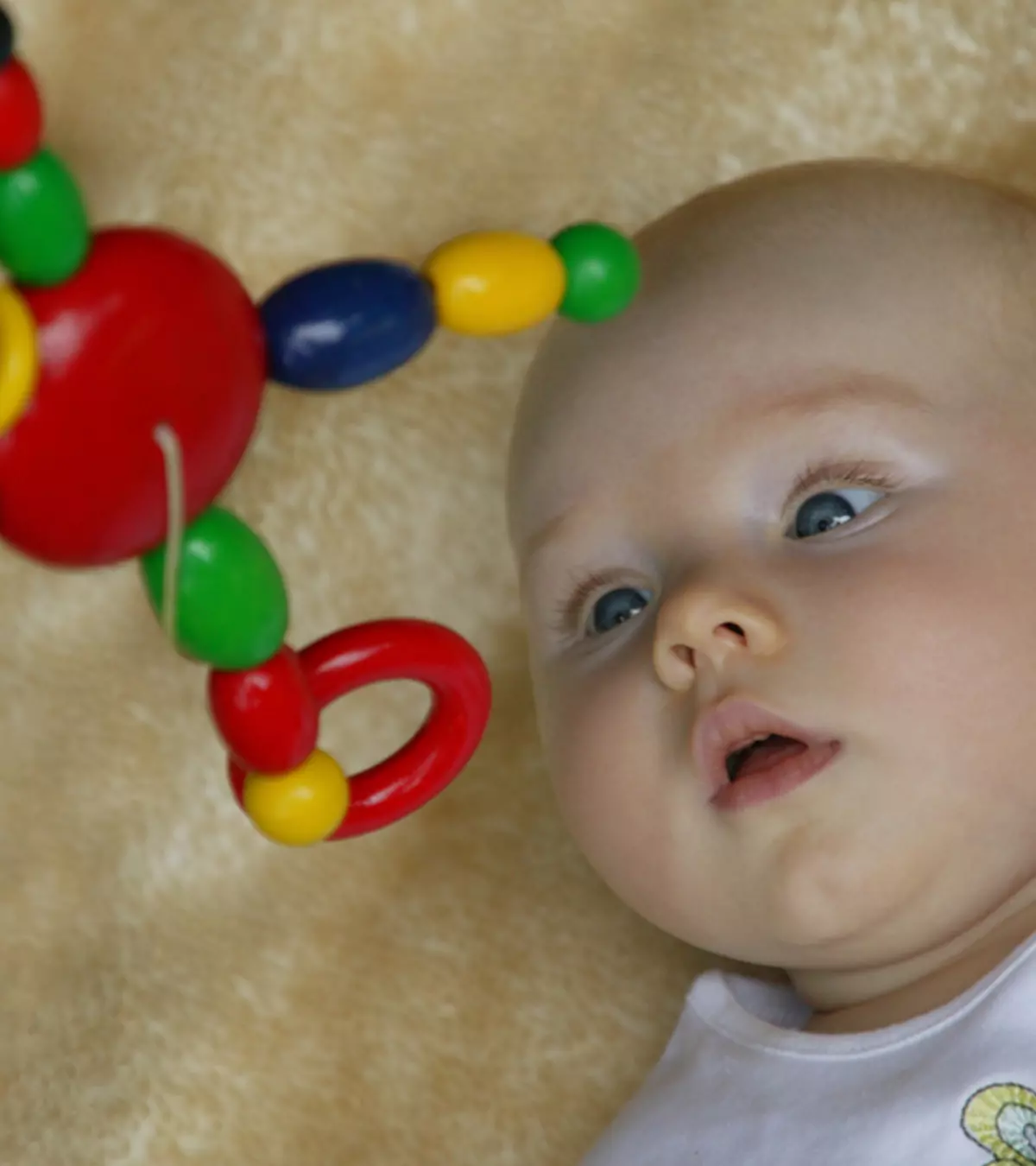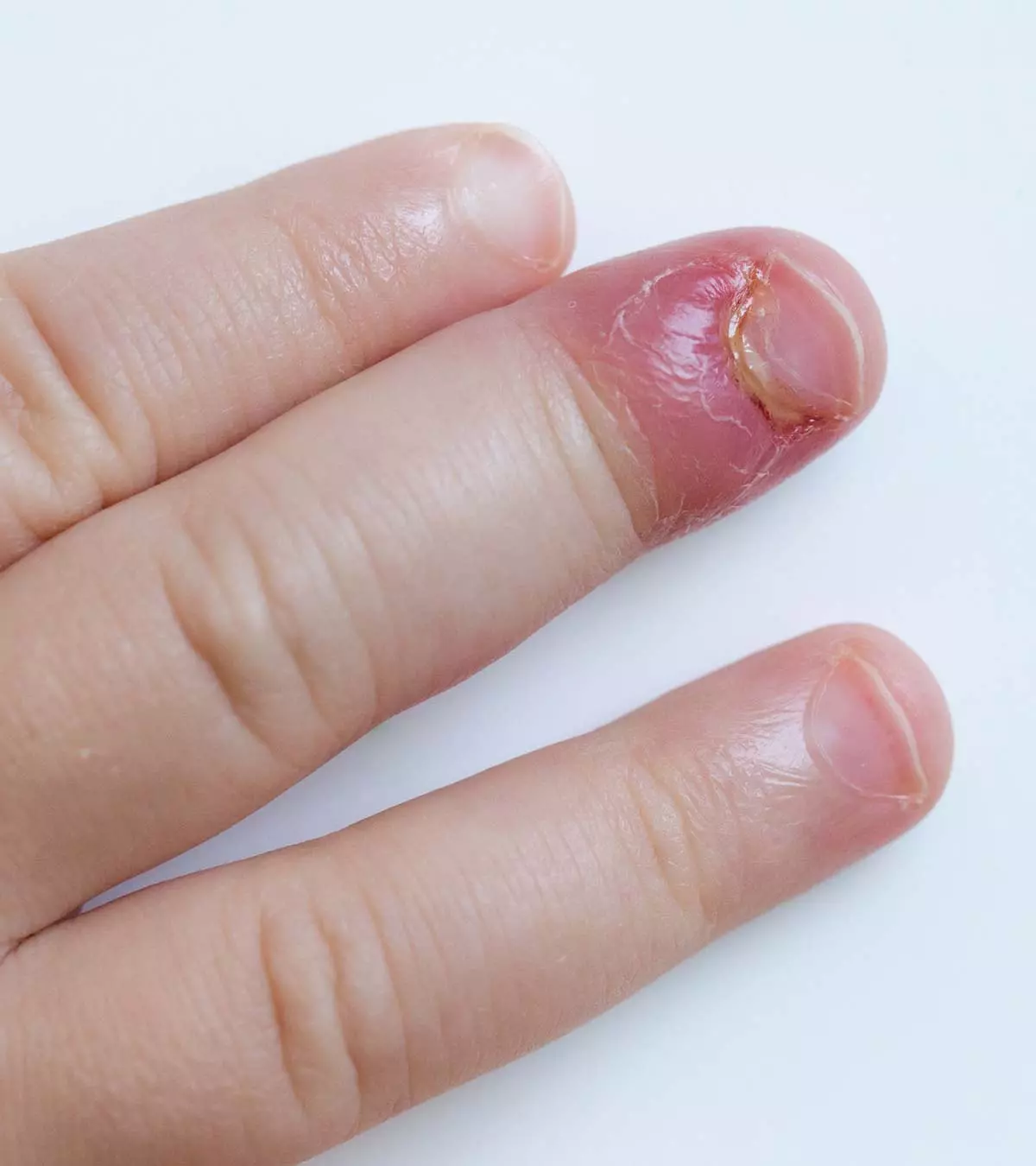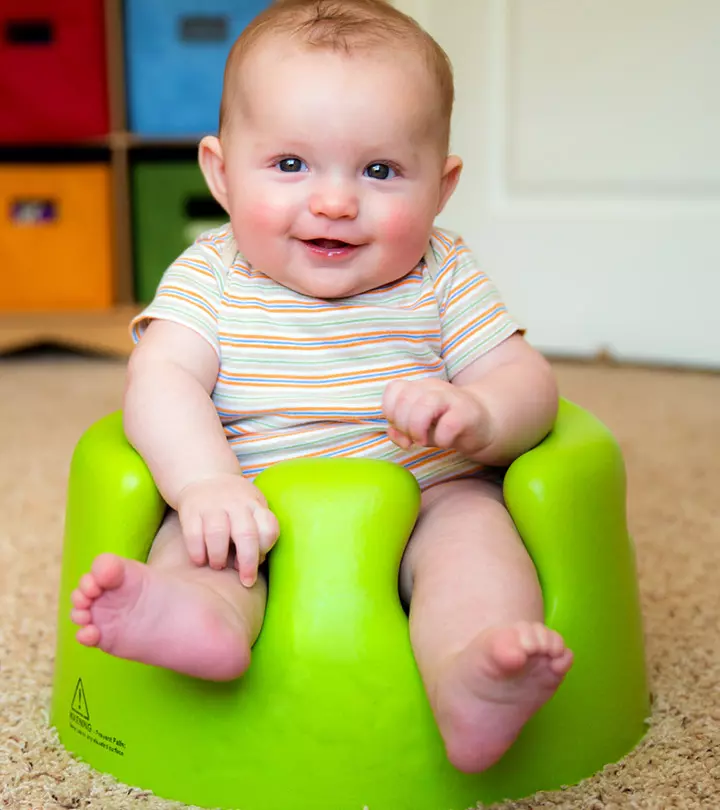
Image: Shutterstock
Bumbo seats are a popular type of baby seat that parents may consider for their little one. But when can babies start sitting in a Bumbo seat? Understanding when a baby can start using a Bumbo seat is crucial not just for safety but also for their overall development. Recognizing key developmental milestones helps parents make informed decisions about their baby’s seating options, ensuring they support their child’s growth. You need to understand Bumbo seats first. Bumbo seats are known for their unique shape, which may help a baby sit without support. It has a carved-out, snug seat with an armrest, backrest, and a stopper at the front. Some variants feature a seatbelt to keep the baby secure.
Read this post to know the uses and potential safety concerns associated with Bumbo seats for babies.
Key Pointers
- Babies usually start sitting up by six months of age, and it’s safe for them to sit on Bumbo seats placed on the floor under parental supervision.
- Ensure to pay attention to your baby when they are sitting on a Bumbo seat, don’t keep it at an elevated level, and purchase a seat with a lap belt.
- Some alternatives that can encourage sitting in babies are tummy time and introducing gross motor skills activities.
When Can A Baby Sit In A Bumbo Seat?

Image: Shutterstock
Most babies can usually sit without support by the age of six months (1). However, babies can get into a sitting position by themselves between the ages of eight and twelve months (2).Therefore, you may use a Bumbo seat for your baby only after they show readiness to sit by themselves. It indicates that the baby’s muscles are strong enough to hold the head and back steady without support.
Are Bumbo Seats Safe For Babies?
Bumbo seats are considered safe and appropriate when used as intended, that is, placed on the floor and used under adult supervision (3). The seats allow parents to place the baby in a seated posture, so they may interact or play with those around. Bumbo seats may be useful when camping or traveling with your baby since they are lightweight. You can place the baby in the seat for feeding or to keep them entertained.
Natalie Bennett, a mother of three, shares her experience using a Bumbo seat for her children. She explains, “I enjoyed having my babies in a Bumbo seat when I want to just quickly prop them up for something. I have seen their ability to sit and look around and be upright. It improved after having them in the Bumbo, only a short time during the day. I never leave them in this for long periods as I know that it can affect their hip health, and so I don’t want to be, you know, harming them in that way (i).”
 Quick tip
Quick tipDo Bumbo Seats Help Babies Sit Up?
There is limited research on whether seats, such as Bumbo seats, can help babies sit up. A study noted that babies younger than eight months could sit well without any problems when provided postural support, such as with a Bumbo seat (4). However, the study did not further explore if the seat could teach the baby to sit independently or expedite the achievement of the ability to sit independently.
“When do babies sit up?” You may ask. Well, most babies can usually sit independently, even on toddler chairs, between the ages of eight and eighteen months (5). Therefore, it is best to wait for the baby to develop the innate motor skills to sit up by themselves. It is usually safer since the ability to sit independently indicates stronger muscles, which can be better at stabilizing the body and avoiding falls when seated.
What Are The Precautions For Using A Bumbo Seat?
You must keep the following points in mind when using a Bumbo seat for your baby.
- Never leave your baby unattended while in a Bumbo seat, even for a few moments.
- Do not put the seat on an elevated surface as it increases the risk of falling.
- Purchase Bumbo seats that feature a safety lap belt. If the Bumbo seat does not have a lap belt, the baby may crawl out of it and hurt themselves.
It should also be noted that if you use Bumbo seats or similar floor seats, baby chairs, car seats, or swings for an extended period, it might increase the risk of container baby syndrome (6). The syndrome occurs due to constant support provided by different equipment, such as seats, causing the baby to not use essential muscles to their full extent. It may ultimately cause the slow development of important muscles and delay the achievement of skills and milestones. Therefore, you may keep the use of a Bumbo seat limited to a few minutes each day.
 Point to consider
Point to considerWhat To Use Instead Of A Bumbo Seat?
The main aim of using a Bumbo seat is to assist and support a baby’s positioning while sitting up. Thus, instead of restraining them to a container seat and restricting their movements, you may try various other activities. These activities could help exercise the baby’s muscles and achieve developmental milestones, such as the ability to sit up (7) (8).
- Encourage tummy time since it is one of the best activities to help strengthen your baby’s muscles and promote progression to achieving developmental milestones. Tummy time can be started as early as after birth.
 Things to know
Things to know- Try supported seating with your baby. Babies can hold their heads steady and unsupported by four months (1). Place the baby in a sitting position on a soft surface on the floor. Sit behind them and support their back. You may place the baby in a few minutes each day until the age of six months, when the baby can sit by themselves without support.
- Introduce activities and exercises for babies that help develop their gross motor skills, including reaching out to objects and pushing and pulling objects while seated. It may help strengthen back muscles, making it easier for the baby to stabilize their body while seated.
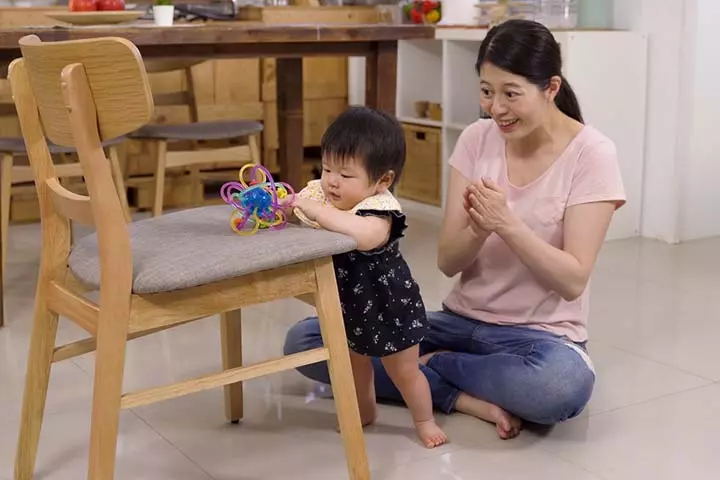
Image: Shutterstock
Frequently Asked Questions
1. Why are Bumbo seats not suitable for babies?
A Bumbo seat poses a risk of falling and hence may be considered unsafe, as it could lead to injuries (3).
2. Can you use a Bumbo seat in Bath?
No, Bumbo seats are not safe to be used while bathing your baby. Moreover, most seats might come with a caution to be not used in or near water to prevent the risk of drowning (9).
3. How do you sit a baby in a Bumbo seat?
You can carefully position them with legs through the leg openings, maintaining back support from the seat’s backrest. Secure the safety straps and keep a close eye on the baby while seated in the Bumbo seat.
4. Are there any cleaning or maintenance tips for a Bumbo seat?
You can use a damp cloth and mild detergent to remove dirt or stains. You can let it sun dry or air dry after washing. Regular cleaning and gentle care will aid in maintaining the condition of the Bumbo seat.
Bumbo seats are convenient and help your babies to sit by providing the necessary back support. However, if you are wondering, “when can babies start sitting in a Bumbo seat?” know that they can use it when they are strong enough to get into a seated position by themselves. Remember not to leave babies unattended in a Bumbo seat to avoid the risk of falling. Also, do not use these seats for an extended period as they may cause container baby syndrome. Instead of a Bumbo seat, you may use tummy time or other similar activities to strengthen your baby’s muscles and help them sit.
Infographic: Points To Remember While Using A Bumbo Seat For Your Baby
Bumbo seats are not highly recommended to be used by babies. However, with the help of a few precautionary measures, it may be considered safe. We have prepared an infographic to provide you with essential guidelines about the safe use of Bumbo seats among infants. Illustration: Momjunction Design Team
Illustration: When Can A Baby Sit In Bumbo Seat? Age Risks & Alternatives

Image: Dall·E/MomJunction Design Team
Learn how to use your Bumbo Floor Seat safely and correctly. Follow these step-by-step instructions for proper use and enjoy the comfort and convenience of your Bumbo Floor Seat.
Personal Experience: Source
MomJunction articles include first-hand experiences to provide you with better insights through real-life narratives. Here are the sources of personal accounts referenced in this article.
i. 3-6 months baby must-haves + regrets || Natalie Bennett.https://www.youtube.com/watch?v=YBTGcJrc7J4
References
- Milestone Moments.
https://www.cdc.gov/ncbddd/actearly/pdf/parents_pdfs/milestonemomentseng508.pdf - Movement: Babies 8 to 12 Months.
https://www.healthychildren.org/English/ages-stages/baby/Pages/Movement-8-to-12-Months.aspx - Bumbo International Trust—Bumbo Baby Seat.
https://www.productsafety.gov.au/search-consumer-product-recalls/bumbo-baby-seat - Study shows sitting up helps babies learn.
https://www.ndsu.edu/news/view/detail/8479 - Infant and Toddler Basics: Development During the First Three Years.
https://extension.missouri.edu/publications/gh6121 - Container Baby Syndrome: How Equipment Can Hinder a Child’s Development.
https://www.nationwidechildrens.org/family-resources-education/700childrens/2018/10/container-baby-syndrome - Your baby’s development from 2 to 12 months.
https://www.nhsinform.scot/ready-steady-baby/early-parenthood/your-baby-s-development-from-2-to-12-months - The Power of Play – How Fun and Games Help Children Thrive.
https://www.healthychildren.org/English/family-life/power-of-play/Pages/the-power-of-play-how-fun-and-games-help-children-thrive.aspx - Record Of Investigation Into Death.
https://www.coronerscourt.wa.gov.au/_files/TPL%20finding.pdf - Choosing Safe Baby Products: Infant Seats & Child Safety Seats.
https://kidshealth.org/en/parents/products-seats.html - Container Baby Syndrome: How Equipment Can Hinder a Child’s Development.
https://www.nationwidechildrens.org/family-resources-education/700childrens/2018/10/container-baby-syndrome - Babies Need Tummy Time!
https://safetosleep.nichd.nih.gov/reduce-risk/tummy-time
Community Experiences
Join the conversation and become a part of our nurturing community! Share your stories, experiences, and insights to connect with fellow parents.
Read full bio of Kay Lakka
Read full bio of Sanjana Bhattacharjee
Read full bio of Rohit Garoo
Read full bio of Ghazia Shah












